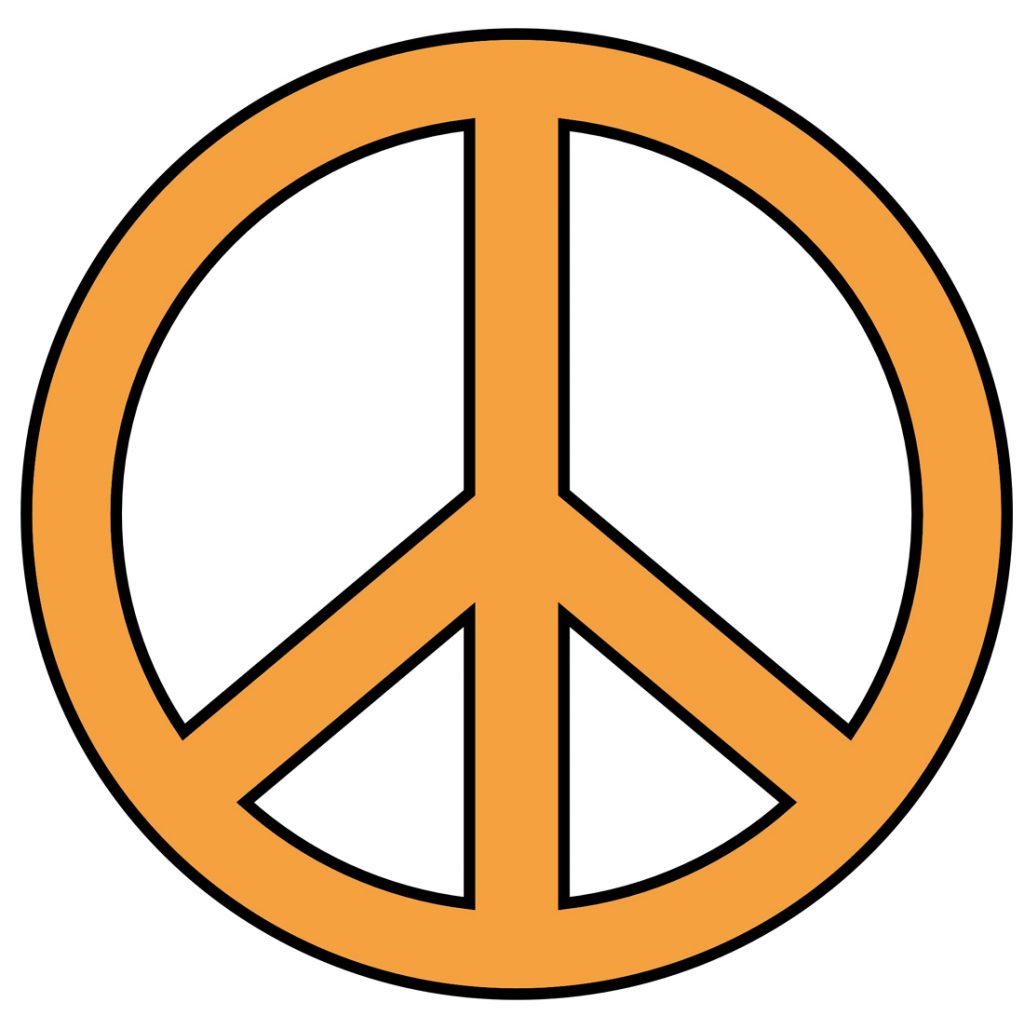Symbol of nuclear disarmament, anti-war, anti-terrorism, solidarity, and peace.
The peace symbol has been around since Good Friday, 1958. It was designed by Gerald Holtom, a pacifist and designer in London. People numbering in the ten thousand converged on Trafalgar Square in London to protest the nuclear war. Over the next four days, people marched to Aldermaston, fifty miles away, where nuclear weapons were being stockpiled and designed.
Soon after, the Campaign for Nuclear Disarmament started using the peace symbol that Holtom had designed. The Campaign for Nuclear Disarmament began in November of 1957. They formed to try and propose unilateral nuclear disarmament. They also opposed building nuclear reactors in the United Kingdom and any military operation involving biological, chemical, or nuclear weapons.
The inside of the symbol comes from a maritime alphabet called the semaphore alphabet. If a sailor stands up straight with two flags lowered at his side, it represents the letter N. If a sailor stands straight up with one hand over his head and one lowered by his knee, it represents the letter D. The inside of the peace symbol combines both semaphores to spell out ND, or Nuclear Disarmament. According to Holtom, he also drew the inside of the peace symbol to show a person in despair holding their arms by their side with their palms facing outward. Some people have associated the inner design with the Algiz rune. The Algiz rune is sometimes called the death rune.

The circle on the outside of the symbol represents the world and oneness. The circle can also represent an unborn child. Circles have represented this in many cultures since ancient times. Native Americans used circles to represent Mother Earth. In Hindu culture, a circle represents wisdom. Put together, the symbols represent despair for man and child. They also represent hope for disarmament and peace throughout the world.
By the mid-1960s, the peace sign stood for the anti-war movement. It was used around the world. Americans used the symbol to protest the Vietnam War, South Africans used it to protest apartheid, and Checkoslovokians used it to protest the Soviet invasion of their country.
In modern times, the peace symbol has been used in various movements, including the women’s movement, gay rights, and the environmental movement. In 2015, after the terrorist attacks in Paris, Jean Jullien replaced the inside of the symbol with the Eiffel Tower to represent anti-terrorism and solidarity.
Because the inside of the symbol looks like the Algiz or death rune, people have called the inside a broken cross and associated it with satanism.
Symbols Menu:» Amulet
» Ajna
» Arsenic
» Merkaba
» Hung
» Yin Yang
» bindi
» IK Onkar
» Khanda
» Halo
» jiahu
» Tau
» Uraeus
» Menorah
» Quincunx
» Tilaka
» Taijitu
» Vajra
» Chai
» Chi Rho
» Bagua
» Dragon
» Hunab Ku
» Caduceus
» Infinity
» Ichthus
» Hedjet
» Lauburu
» Om
» Ankh
» Chalice
» Pentacle
» Maat
» Ogham
» Mandala
» Kartika
» Khamsa
» Heart
» Labrys
» Sun Face
» Raven
» Triskele
» Scarab
» Dove
» Hanukia
» Anubis
» Trishula
» Durga
» Mezuzah
» Bay Tree
» Geruda
» Kinnara
» Quito
» Condor
» Blue Jay
» Falcon
» Makara
» Rosary
» Uluru
» Apsaras
» Hanuman
» Serpent
» Minotaur
» Mercury
» Apex
» Vestra
» Yoni
» Astarte
» dakini
» Calabash
» Mandrake
» Rebis
» Typhon
» Vegvísir
